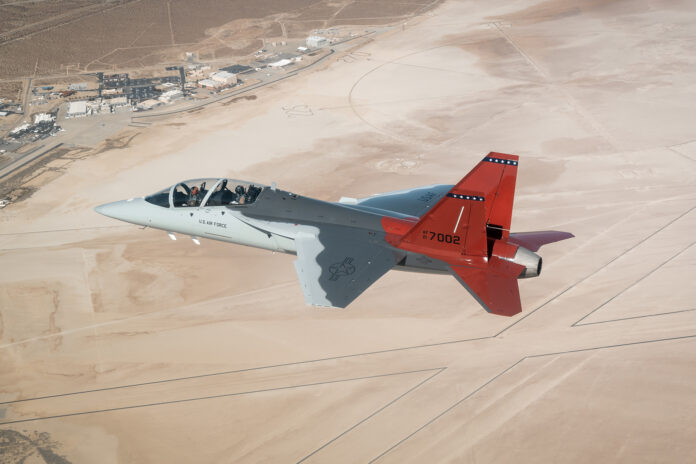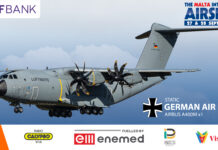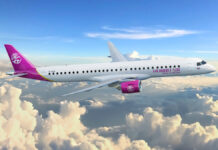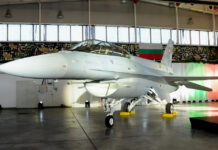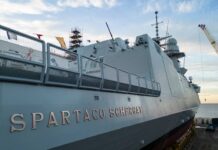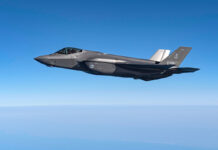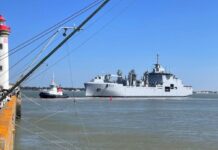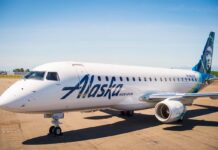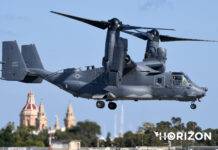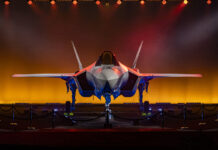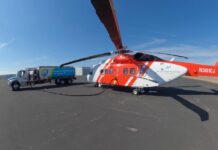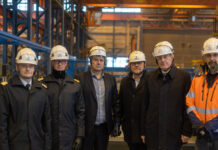The Air Force’s new bird of prey, the T-7 Red Hawk, arrived at Eglin Air Force Base Dec. 15 to begin a series of climate testing at Eglin AFB’s McKinley Climatic Lab.
The purpose of the testing is to verify the T-7A’s system functionality while operating in extreme environmental conditions. Among others, those conditions consist of minus 25 degrees Fahrenheit and up to 110 degrees sustained temperatures. The climatic chamber testing will evaluate the aircraft system’s performance including propulsion, hydraulic, fuel, electrical, secondary power, environmental control and overall operations.
“The Red Hawk must withstand a range of environments from sitting on the ground in the Texas heat to flying at altitude. The climatic lab helps us do this in a deliberate and methodical way and will give us confidence that our new aircraft meets requirements.”
Dr. Troy C. Hoeger, Air Force Life Cycle Management Center’s T-7A chief developmental tester
The relatively new T-7A only arrived at Edwards AFB, California for testing in November. It is set to be the replacement aircraft to T-38C fleet. The T-7A will drastically improve training for the next generation of fighter and bomber pilots and will better prepare student pilots to advance into fourth and fifth-generation fighter and bomber aircraft. With advanced mission systems, a glass touchscreen cockpit, stadium seating and embedded training capability the T-7A Redhawk will make a fundamental difference in future pilot training, according to Hoeger.


